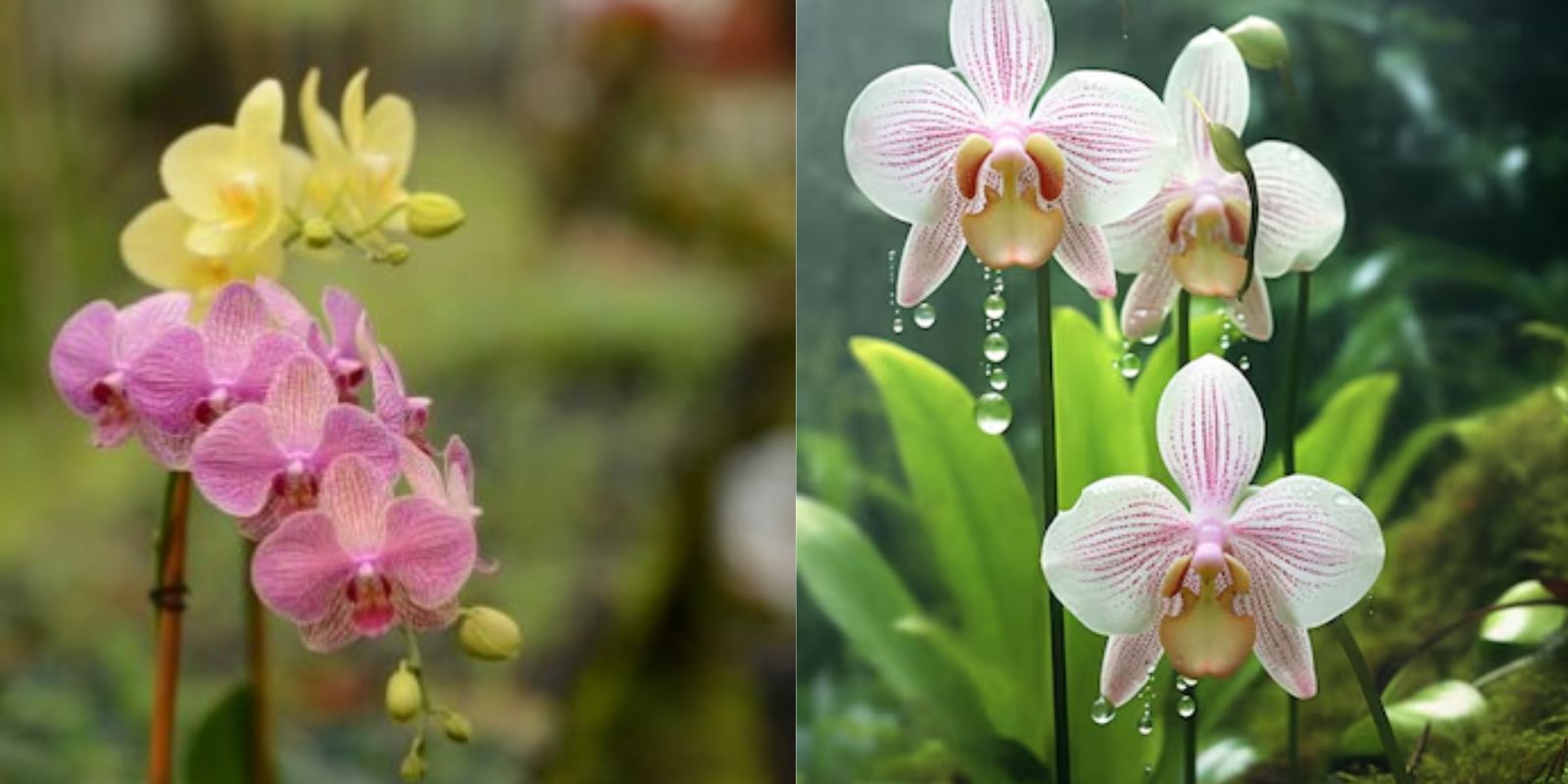Orchids, with their exotic blooms and intricate patterns, are among the most coveted plants in gardens and homes alike. However, achieving and maintaining the lush, healthy growth that makes orchids truly spectacular can be a challenge. If you’re striving for an orchid that is both vibrant and flourishing, the “Nursery Method” using a secret ingredient could be your key to success. This comprehensive guide will walk you through the steps to implement this method, ensuring that your orchid reaches its full potential.
Understanding the Nursery Method
The Nursery Method involves using a special nutrient mixture to enhance orchid growth, inspired by practices used in professional nurseries. By employing this technique, you can provide your orchid with the ideal conditions to thrive, leading to healthier plants and more beautiful blooms.
Why Use This Method?
- Enhanced Growth: Provides essential nutrients that are often missing in regular potting soil.
- Lush Blooms: Promotes more abundant and vibrant flowering.
- Improved Plant Health: Strengthens the plant’s resistance to pests and diseases.
Materials Needed
Before you start, gather the following materials:
- Healthy Orchid Plant: Ensure it’s free from pests and diseases.
- Orchid-Specific Fertilizer: Choose a balanced formula suitable for orchids.
- Worm Castings or Compost Tea: These are rich in nutrients and beneficial microorganisms.
- Watering Can or Sprayer: For applying the nutrient solution.
Step-by-Step Guide to the Nursery Method
1. Selecting a Healthy Orchid
Choosing the Right Plant:
- Inspect the Orchid: Look for signs of good health, such as firm, green leaves and a strong root system. Avoid plants with yellowing leaves or visible pests.
- Variety Matters: Different orchid species have varying care requirements. Ensure you select an orchid that is suited to your growing conditions.
2. Preparing the Secret Ingredient
Why Worm Castings or Compost Tea?
- Worm Castings: These are rich in essential nutrients and beneficial microbes that improve soil health and plant growth.
- Compost Tea: Provides a liquid form of nutrients and promotes microbial activity in the soil.
Preparation Process:
- Worm Castings: Mix a small amount (about 1-2 tablespoons) with water according to the product’s instructions to create a nutrient-rich tea.
- Compost Tea: Brew compost tea by soaking compost in water for 24-48 hours. Strain the mixture before use.
3. Mixing the Solution
Combining Fertilizer and Ingredient:
- Ratio: Follow the instructions on your orchid fertilizer package for the correct amount to use. Typically, it will be diluted with water.
- Add Secret Ingredient: Mix the prepared worm castings tea or compost tea with the orchid fertilizer solution. This combination provides a balanced nutrient supply.
4. Applying the Solution
Application Method:
- Watering Can or Sprayer: Use a watering can or sprayer to evenly distribute the nutrient solution.
- Root Application: Focus on watering the roots of the orchid. Avoid applying the solution directly to the leaves, as this can lead to fungal issues.
Frequency:
- Initial Application: Start by applying the solution once a month.
- Adjust as Needed: Monitor the plant’s response and adjust the frequency based on its growth and health.
5. Monitoring and Adjusting
Observing Plant Response:
- Growth Changes: Look for signs of increased growth, such as new shoots or leaves.
- Flowering: Pay attention to any changes in blooming patterns. A well-nourished orchid should produce more vibrant flowers.
Adjustments:
- Solution Strength: If the plant shows signs of over-fertilization (e.g., leaf burn), dilute the solution further.
- Application Frequency: Increase or decrease application based on the plant’s health and growth response.
6. Maintaining Optimal Conditions
Light:
- Proper Exposure: Ensure your orchid receives adequate light. Most orchids prefer bright, indirect light. Too much direct sunlight can cause leaf burn.
Humidity:
- Humidity Levels: Orchids thrive in higher humidity. Maintain humidity levels around 50-70% for optimal growth.
Airflow:
- Ventilation: Good airflow around the plant helps prevent fungal infections and promotes healthy growth. Ensure your orchid is not crowded by other plants.
Troubleshooting Common Issues
Leaf Yellowing: This could indicate overwatering, nutrient deficiencies, or poor light conditions. Check and adjust watering practices and light exposure.
Root Rot: Ensure proper drainage and avoid letting the plant sit in water. Use a well-draining orchid mix to prevent root rot.
Pest Infestations: Common pests include aphids and scale insects. Treat infestations promptly with organic pest control methods.
Long-Term Orchid Care
Repotting:
- Frequency: Repot your orchid every 1-2 years or when the potting medium breaks down.
- Potting Medium: Use a specialized orchid mix to provide proper aeration and drainage.
Pruning:
- Dead Flowers: Remove spent flower spikes to encourage new growth.
- Damaged Leaves: Trim any yellow or damaged leaves to keep the plant healthy.
Conclusion
The Nursery Method using a special nutrient mixture is a powerful technique to enhance the growth and health of your orchids. By following the steps outlined in this guide, you can provide your orchids with the ideal conditions to thrive, resulting in vibrant blooms and a stunning display of natural beauty. Embrace this method, enjoy the process, and watch as your orchids transform into lush, flourishing plants.
Happy gardening and may your orchids bloom with brilliance!

